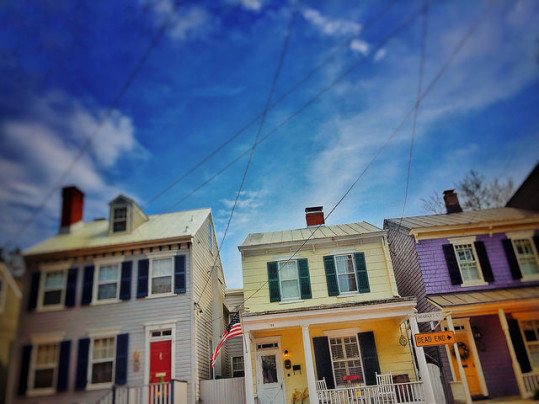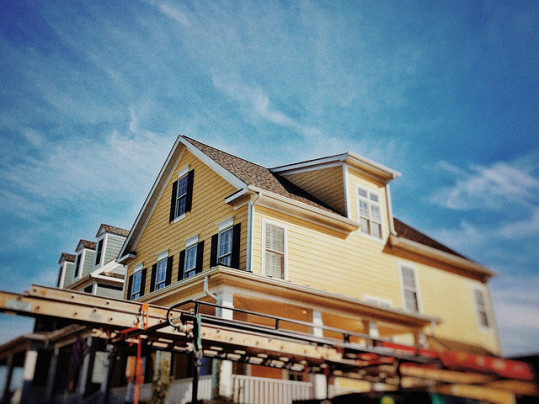Everybody knows buying a house is a long-term commitment. After all, the typical mortgage is paid over 30 years and the typical home seller has been in their home for almost 10 years. In other words, homeownership isn’t for frequent movers or anyone with a strong case of wanderlust. But regardless of how long you stay in one place, you aren’t likely to outlast your house. That’s because most homes will last around 100 years, according to a new analysis from the National Association of Home Builders of numbers from the Department of Housing and Urban Development. In fact, just 0.59 percent of all housing units are lost each year. These homes are lost for various reasons – including demolition, disaster, conversions, mergers, and homes that were put to non-residential uses. And that rate is pretty consistent whether the home was built in 1983 or 1962. In fact, when broken down per decade, the annual loss rate is fairly steady, though it does accelerate to just over 1 percent for homes built before 1950. Overall, the data suggests most of the homes built recently will still be standing 100 years from now and, even if you bought a house built 40 years ago, it’ll likely still be standing strong in 2076. More here.
Archive for October 2016
New Home Sales Up 30% Over Last Year
In September, new home sales were 29.8 percent higher than they were at the same time last year, according to new numbers from the U.S. Census Bureau and the Department of Housing and Urban Development. The data shows sales up 3.1 percent from the month before and at their second-highest level since the recovery began. That’s good news for the housing market because any increase in new home sales helps spur more new home construction, which raises for-sale inventory and moderates price increases on all homes up for sale. As it is, the median price of a new home sold in September was $313,500; the average sales price was $377,700. And, with the number of new homes for sale lower than the month before, prices will likely continue to rise in the near term. Still a more favorable labor market and low mortgage rates have helped balance higher prices and kept buyer demand high. As an example, economists and analysts predicted a sales decline for September, making the results both unexpected and a good indication that potential home buyers aren’t being deterred by higher prices. More here.
Where Are Mortgage Rates Headed Next Year?
Last week, average mortgage rates fell across most loan categories, according to the latest survey from the Mortgage Bankers Association. In fact, rates for 30-year fixed-rate loans with both conforming and jumbo balances fell, as did interest rates on 15-year fixed-rate loans. Loans backed by the Federal Housing Administration rose slightly. For most of this year, mortgage rates have hovered near historic lows, providing incentive to buyers who may have otherwise been scared off by higher home prices and increased buyer competition. So what does the future hold for mortgage rates? Well, Michael Fratantoni, MBA’s chief economist and senior vice president for research and industry technology, says any increases over the next few years should be gradual. “Rate increases through 2017 and 2018 will likely be gradual, as Chair Yellen and the Fed have indicated that they are going to be cautious going forward,” Fratantoni said. “Historically low, and in some cases negative, rates around the world continue to put downward pressure on longer-term U.S. rates … We expect that the 10-year Treasury rate will stay below three percent through the end of 2018, and 30-year mortgage rates will stay below 5 percent over the same period.” More here.
Garage Data Shows Us Where We Park It
Having a car isn’t really a choice for a lot of Americans – and even some of us that are lucky enough to choose whether or not to have a car decide to have one. Put simply, cars are a fact of life for most us. So it comes as no surprise that an analysis of Census Bureau construction data done by the National Association of Home Builders found that an increasing number of new homes have garages and the size of those garages is also on the rise. For example, the share of homes with a three or more car garage jumped from 11 percent in 1992 to 20 percent in 2005. And, in the past decade, new homes built without a garage have become almost non-existent. Robert Dietz, NAHB’s chief economist and senior vice president for economics and housing policy, breaks down the numbers in a recent article. “For new single-family completions in 2015, 61 percent of homes offered a two-car garage,” Dietz writes. “Another 24 percent of homes possessed a garage large enough to hold three or more cars. Just 6 percent of newly-built homes had a one-car garage, and only 1 percent possessed a carport. Another 9 percent of new homes had no garage or carport.” Additionally, of the 9 percent of homes without a garage, 23 percent were townhomes. More here.
For all your mortgage needs or advice, please contact me – or visit www.robertfairhomeloans.com. I welcome all questions and feedback.
Housing Outlooks Have Differing Visions
The housing market has been sort of a mixed bag this year. While home sales are expected to exceed last year’s levels and mortgage rates are still hovering near record lows, fewer houses for sale have presented potential home buyers in many markets with increased competition and higher prices. In short, you could look at the numbers and come to a couple of different conclusions. As an example, two recently released forecasts have differing views on what lies ahead for the residential real estate market. Fannie Mae’s Economic & Strategic Research Group’s October 2016 Economic and Housing Outlook sees housing momentum beginning to slow. Doug Duncan, Fannie Mae’s chief economist, says recent declines in sales, construction, and mortgage applications may mean continued weakness in the near term. However, Duncan also acknowledges the fact that improved demand from first-time home buyers is an encouraging sign. On the other side of the fence, Freddie Mac’s most recent forecast calls for continued gains and calls the housing market an economic bright spot. “As the economy sputters along a little bit faster than stall speed, the U.S. housing market continues to be a bright spot, though there’s less room to run than in the prior few years,” Sean Becketti, Freddie Mac’s chief economist, says. “We see new home sales improving some next year driven by increases in single-family housing construction which will push total home sales slightly higher.” More here.
The Top Obstacles To Homeownership
Buying a house is a big deal. Not only is it a major financial transaction, it also represents a tremendous responsibility. Because of this, there aren’t too many people that enter the housing market without giving some thought to whether or not it’s the right time for them to buy. So what are some of the top reasons potential buyers give when asked why they might delay their purchase? A recent survey from NeighborWorks America asked and found, for a growing number of buyers, it’s student loan debt. In fact, 30 percent of respondents said they knew someone whose student loans caused them to put off buying a house. That’s a 6 percent increase from two years ago. The survey also found, among people who said they had student loans to pay off, 53 percent said it was an obstacle. Student loan debt is a growing problem for potential buyers and one that may be holding back young adults who may otherwise be active in the market. Rent is another. For many aspiring homeowners, their current rent is too high to put away any meaningful savings toward a down payment. Still, nearly 60 percent of current renters said they hope to one day buy a home. More here.
First-Time Buyers Spur Home Sales Gain
September sales of previously owned homes rose 3.2 percent from the month before, according to new numbers released by the National Association of Realtors. The gains were a welcome change after a two-month slide. Lawrence Yun, NAR’s chief economist, said the improvement was due to a boost in the number of first-time home buyers active near the end of summer. “The home search over the past several months for a lot of prospective buyers, and especially for first-time buyers, took longer than usual because of competition for the minimal amount of homes for sale,” Yun said. “Most families and move-up buyers look to close before the new school year starts. Their diminishing presence from the market towards the end of summer created more opportunities for aspiring first-time homeowners to buy last month.” In fact, the share of first-time buyers rose to 34 percent in September. That’s the highest it’s been since July 2012. Historically, new home buyers represent closer to 40 percent of all home sales. Because there have been fewer first timers active in the market recently, an increasing number is seen as good news and vital to housing’s health. Also encouraging, the number of homes available for sale rose in September. At the end of the month, inventory was 1.5 percent higher than the month before. More here.







